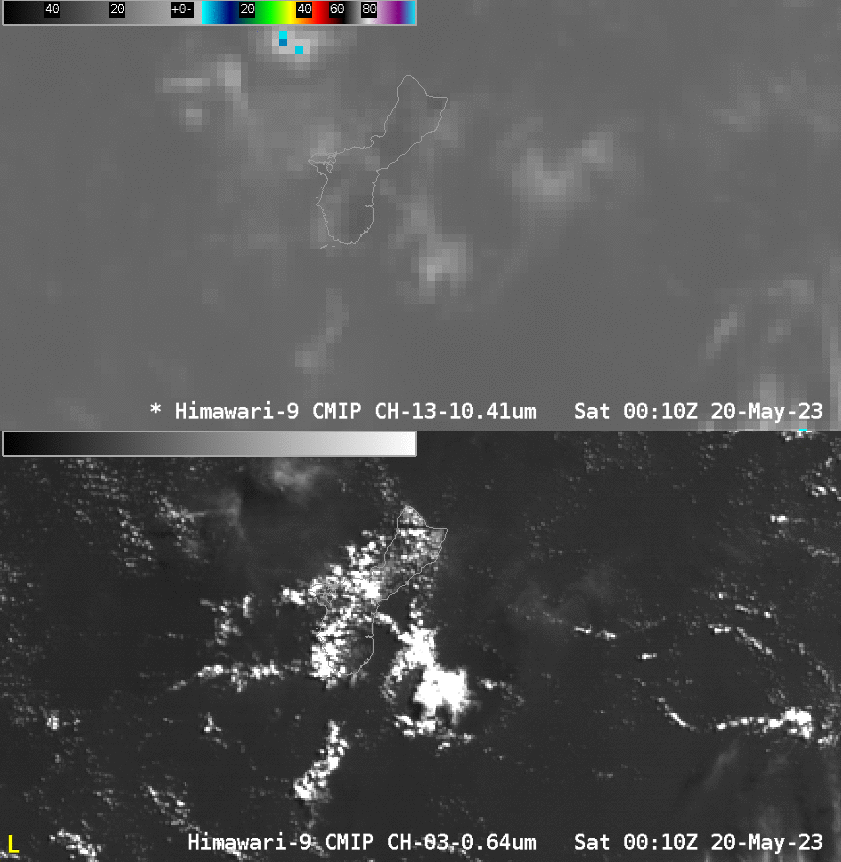The curious case of the circular sunglint

NASA Worldview imagery of Terra (launched in 1999 and still producing imagery!) MODIS true-color imagery, above, from this link, shows an ellipsoidal feature to the southeast of Guam with cloud development along its southern flank. Terra was passing west of Guam at about 0045 UTC on 20 May 2023, with the rising sun in the eastern sky (Terra orbits for that day over the western Pacific are here, taken from this site). Sunglint in visible imagery is caused by reflection of solar energy off the ocean’s surface; the concentration — brightness — of the sunglint is related to the ocean state. If the ocean surface is completely flat, reflection would be in one region that would be very bright, and the surrounding ocean where winds are light would be dark. Beyond the region of light winds, the sea would appear bright. Thus, changes in the sunglint apparent above are likely related to changes in the windspeed over the ocean in the region.
Cloud debris exists near the center of this ellipse, and it’s reasonable to assume this is a dying convective feature, and that the ellipse outlines the outward-propagating downdraft. The animation of Himawari Clean Window infrared (Band 13, 10.4 µm) and visible imagery (Band 3, 0.64 µm), below, from 0010 to 0100 UTC on 20 May, shows motion cloud features consistent with that theory.


